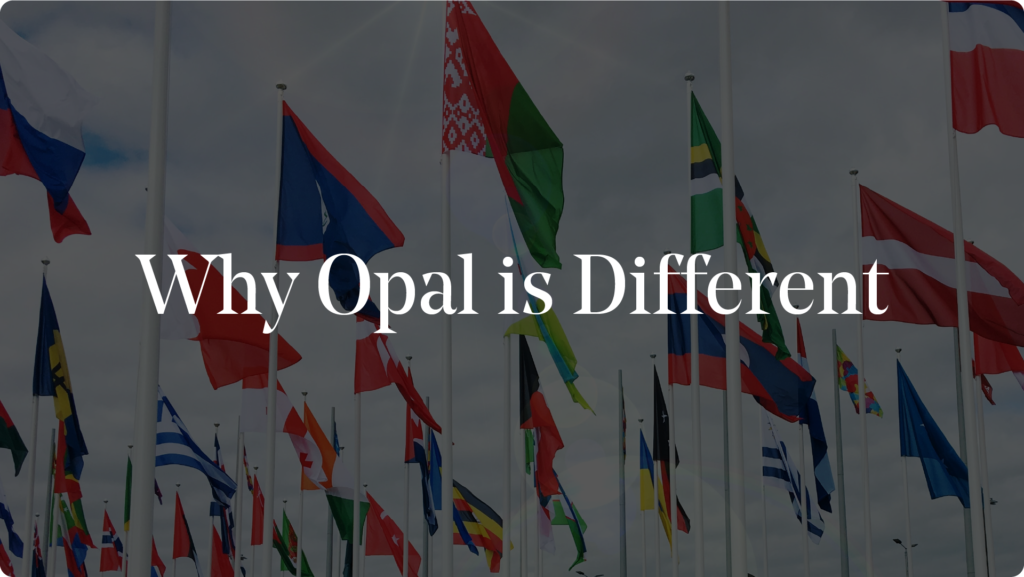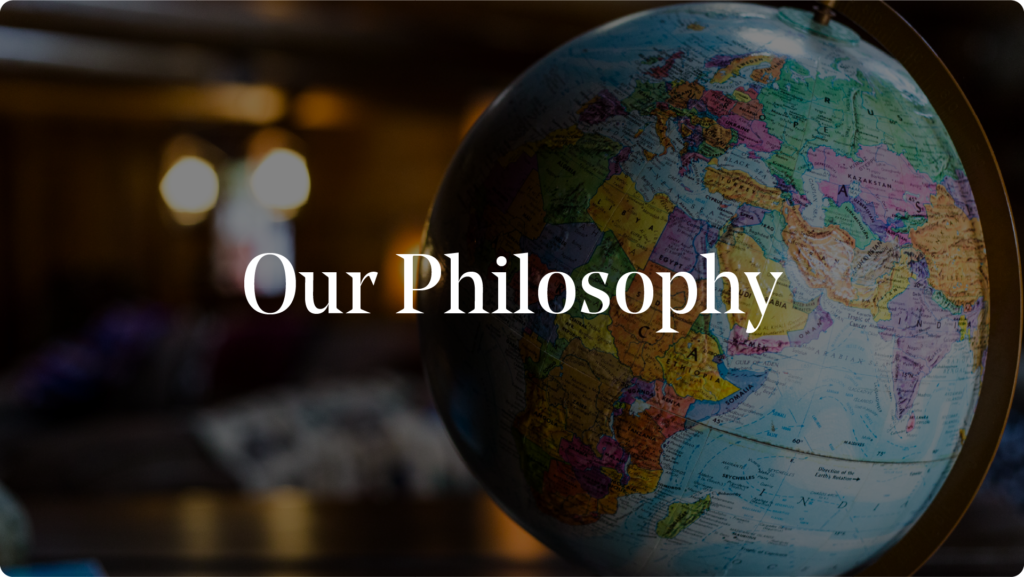by David Gorman
Brands are ever-increasingly marketing globally to reach their full audience. This is not an easy task, especially when it comes to translations. Translating marketing work at-scale, in a way that maintains brand integrity, is a massive challenge. It’s no surprise that marketing translation is in high demand.
Pasting work into Google Translate doesn’t cut it. That might satisfy basic needs for a small business, but certainly not when a billion-dollar brand is on the line. It’s critical that the message has the intended tone, meaning, and impact in any of the many languages it will appear.
As brands have built out their translation and localization functions, they have also tried to increase efficiency using machine translation tools to take a “first pass”. This is better than nothing, but it’s problematic in several ways: getting work into and out of these tools is arduous, the quality is inconsistent, and the languages are limited. Even with human oversight, this is an error-prone way of working.
As always… there must be a better way! We have wanted to help our customers find this better way for years, and we now have. I’m truly excited that we have launched a Generative AI text translator right in Opal, and it’s leagues better than anything I’ve seen our customers use. The quality of AI content translation and the workflow for using it are vastly better.
Let’s talk about what makes our AI text translation capabilities uniquely good for marketing, why it made sense to build them into our marketing platform, and my philosophy on how it supports human translators.
How Opal Will Implement AI Text Translation
Opal has been the marketing and content operations platform where international brands have created content for 10 years now. For many of these brands, Opal is their central hub for all content – across the globe and across channels. AI text translation is the logical next step for us and our customers.
When it comes to leveraging AI for these brands, our philosophy is to only use it for solving real problems that enable marketers to better use their time. The goal of implementing marketing translation capabilities has been exactly in that vein: let marketers create professional-grade content translations in seconds.
Our AI text translator is available for every single piece of content customers build in Opal – or an entire campaign, all at once. The same space where they create and collaborate on the content is the same space they can now translate it for global distribution – with just a click.
AI-Powered Marketing Translation Must Offer

Marketing-grade translation is a high bar for software (or even a professional) to clear. Saying you can offer automated, marketing-grade translation and delivering on it are two different things. Whether you’re talking about Opal or any other marketing translation tool, our experience with customers has shown these are the must-have elements:
1. No limit on languages – Any language in which you want to communicate with an audience needs to be accessible to you. A reliable marketing translation tool should have the capability to translate content into essentially any language. Dialects and subsets must also be covered by a marketing-caliber platform – this is important to not seem “tone-deaf” in certain regions.
2. Respect original tonality – Maintaining the original tonality of the content is crucial in marketing translations. The tool should understand the nuances of different word choices, be it casual, serious, or something unique. Marketing language is creative, and translation tools must be able to work with that. AI-powered translation does a fantastic job of preserving the intended tone and emotion. While the best AI text translators excel here, a human should always look over the work to verify.
3. Work within a format – Matching the medium is nearly as essential as translating the message. An effective marketing translation tool should recognize and respect the specific formats of various content types. Whether it’s social media posts, emails, or other marketing materials, the tool should adapt the translation to match the structure and style of the original content.
4. Understand specifics – Marketing translation solutions should be able to grasp your brand’s unique terminology, industry jargon, and specific requirements. This understanding ensures that the translations align with your product or service specifics, and your brand’s voice, values, and target audience. Be careful here, as mistakes in your marketing translation can undermine your brand governance.
5. Human tone – This is one of the elements that separates generative AI translation from legacy translation tools. The tool should be capable of generating translations that sound natural and authentic, rather than robotic or awkward. Once again, a marketer may need to smooth out responses, but the right translation gives them a huge head start!
6. Accuracy – In order to be used by billion-dollar brands in real market situations, accuracy is essential. The translation tool must prioritize accuracy to avoid any misunderstandings or misinterpretations. AI-powered translation again excels here due to its innate “understanding” of language vs. individual words. One of the best ways to assess the accuracy of a translation is to re-feed the first translation into the original language to see how close it is.
7. Reduction of manual work – An efficient marketing translation tool should minimize time spent on manual translation. It should also limit human error by reducing the steps, and the back-and-forth between tools, that can lead to mistakes. While humans are still key to ensuring a perfect final product, AI has the ability to start the process with accurate and natural content translation.
8. Internal consistency – When working with a complex piece of content (e.g. an email with many different sections of copy or a social carousel ad), traditional translation workflows will have each section translated separately. This usually looks like an immense number of rows in a spreadsheet, which is both tedious and error-prone. It can lead to inconsistency in word choice that negatively affects tone, and a lot of copy/paste mistakes. Word choice plays a crucial role in brand alignment, specifically on social media – marketing translation respects that.
Why Opal AI Text Translator Is Different
From the jump, our goal for this translation feature was lofty. Fortune 100 brands will trust Opal’s AI text translation software to bring their marketing message to a globally engaged audience.
Here’s a brief look “under-the-hood” at the key differentiators of our marketing translator:
1. Uses Large Language Model (LLM) – The new wave of AI translators have the advantage of using the GPT-4 LLM. LLMs are well-suited to translation because they have a better understanding of the relationship between words. Rather than just seeking one-for-one word replacement, Opal’s translation feature understands the entire document and translates it holistically. The difference in the quality of the output is clear.
2. Prompt Engineering – Precise prompt engineering is what makes the Opal AI marketing translation tool a far cry from simply copying and pasting your content into ChatGPT and hoping for the best. Our prompt engineering focuses on the specifics of marketing content that will produce the best output without wasting your time fiddling. These specifics have been tuned extensively using real-world content to ensure the highest quality output is achieved reliably.
3. Contextual Translation – Opal’s AI text translator intelligently translates content in context of what’s around it. This leads to significantly better word choice and tonality consistency, and ultimately, more human-sounding output.
Opal’s Philosophy on the AI Co-Pilot

From the outset, the goal of Opal’s AI-powered marketing translation was to free up skilled humans – not replace them. While our text translations are extremely accurate, we absolutely recommend that humans evaluate the work and make judgments on it.
Ultimately, when the stakes are as high as how your brand communicates to your audience, those details cannot be entirely outsourced to AI. While an AI translator is a capable co-pilot, a human needs to be accountable.
Instead of a workflow where marketers and translators pore over hundreds of social posts and thousands of lines of copy, we envision a different way of doing things. Rather than doing bulk translations by hand, we see the opportunity for humans to evaluate the AI translator’s work and then optimize it for the local market. Rather than using the human mind for mechanical translation, we want to see people put their cultural knowledge into driving the most impact through the content.
At Opal, AI text translation is just one of the many avenues for incorporating AI into our platform. You can expect that as generative AI evolves, our platform will evolve in how we leverage it, too. See how we implemented an AI brainstorming tool for marketers.
Explore the Entire Opal Platform
While the focus of this blog is Opal’s AI content translation capabilities, the platform is much more than that. Opal is a beginning-to-end marketing platform trusted by many of the world’s largest brands. This AI text translator is just one element of what we offer.
For brands like Target, Starbucks, GM, and many others, Opal empowers marketers by providing a central hub to plan, create, and calendar their content, supported by an AI co-pilot.
If you believe Opal could be a good fit for the marketers, communicators, and creatives in your organization, I would be happy to connect you with my team. You can schedule a customized demo right here to see the platform in action. During the demo, our specialist will guide you through Opal’s capabilities, focusing on addressing your specific marketing needs.


